Global Discoveries on DVD | Then and Now, Hither and Yon
 By Jonathan Rosenbaum
By Jonathan Rosenbaum
Saddled with its stupidly inappropriate and misleading reissue title Betrayed, William Castle’s justly celebrated Z-budget 1944 thriller When Strangers Marry—shot in seven days for $50,000, and released by Monogram Pictures—has finally become available on DVD in the Warner Archive Collection. And part of its special power is both its similarity to and difference from the pricier and more Hollywoodish Val Lewton items from the same period. (The running time is 67 minutes, and the cast features both The Seventh Victim’s Kim Stanley and Lou Lubin, the jittery private eye in that film. If anything, Castle’s cast included more unknowns at the time, though some of these nobodies turned out to be Robert Mitchum, Dean Jagger, and, in a final-scene cameo, Rhonda Fleming—not to mention a script partly credited to Philip Yordan and a hokey Dimitri Tiomkin score.)
The movie premiered in Brooklyn rather then Manhattan, but it won raves from Manny Farber in The New Republic (December 4, 1944), Orson Welles in his daily “Almanac” column for the New York Post (January 25, 1945), and eventually James Agee in The Nation (April 7, 1945). Farber’s review is by far the sharpest and most detailed, and as I’ve recently discovered, Castle even plagiarized portions of it in his 1976 memoir Step Right Up! I’m Gonna Scare the Pants off America: Memoirs of a B-Movie Mogul, removing some of Farber’s poetic inflections in the process. (Castle: “I wanted the film to express the melancholia of being troubled and lonely in a strange city. Using dull, flat gray light throughout I managed to make the film stark and unrelenting, projecting the story as an actuality rather something being enacted for a camera or audience.” Farber: “Its best scenes…express some of the solemn melancholia of being troubled and lonely in a strange city…The girl and her husband hide out in what seems the kind of desolate apartment building such a couple would get into, the kind that nobody seems to own and in which nobody seems to belong, neat and hard, with a dull, flat, gray light in the rooms where a few heavy pieces of furniture are widely separated…William Castle’s direction projects the story as an actuality rather than as something being enacted for a camera, director or audience…”) And in a less blatant way, Welles gave some indication of possibly having read Farber as well. (Welles: “Making allowances for its bargain price budget, I think you’ll agree with me that it’s one of the most gripping and effective pictures of the year. It isn’t as slick as Double Indemnity or as glossy as Laura, but it’s better acted, better directed than either.” Farber: “In fact, the whole thing seemed original to me, compared to movies like Double Indemnity, Laura or Phantom Lady.”)
Significantly, Castle cites and quotes from Welles and Agee at length, but mentions the lesser-known Farber only when Agee does. Farber, who may have been as obsessed with the mainstream (in his own fashion) as Castle was, would have no doubt appreciated the distinction. But it seems to me that Farber is the one who essentially discovered this rough gem, even though he later lamentably decided to omit this exceptional review from Negative Space.
***
Among the many pleasures I found in the smartness of Alex Garland’s Ex Machina were its complex set of responses to other SF films (not to mention Mary Shelley’s Frankenstein, which it provides with a thoughtful sex change): most clearly Solaris (including even the use of a Jackson Pollock canvas to “reply” to Tarkovsky’s employment of Brueghel’s “Hunters in the Snow”), but perhaps also John Boorman’s Zardoz (1974) in a few aspects of its production design and its periodic rape fantasies. So bearing in mind the Henri Langlois concept that the present is always served by being cross-referenced with the past, I re-watched Zardoz (on Twilight Time’s welcome new Blu-ray) a day later, and also tracked down my polemical defense of it in my “Paris Journal” in the July-August 1974 Film Comment—only to discover that I’d reviewed it alongside Solaris more than 40 years ago, when the critical reception of science fiction was far more skeptical in the mainstream press than it is today. (I suspect that I was thinking back then mainly of Pauline Kael’s scornful ridicule of both 2001 and Zardoz.)
Because I haven’t yet gotten around to posting this joint review on my website, I hope I can be indulged for reproducing it here. To clarify the context a little, this followed a putdown of le cinéma classique, as represented by Bertrand Tavernier’s first feature, L’horloger de Saint-Paul, and a celebration of what I called le cinéma sauvage, as represented by Jacques Rivette’s Céline et Julie vont en bateau, the work print of which I’d just seen at a private screening. And my concluding sentence was a cryptic nod to the cheerful intransigence of Jonas Mekas, who’d ended one of his own rants with the same pronouncement:
“March 14 & 21: Andrei Tarkovsky’s Solaris and John Boorman’s Zardoz. The customary charges brought against modern science fiction—another potential form of le cinéma sauvage—are precisely what I like about it: pretentiousness and obscurity; or to use somewhat less loaded terms, ambitiousness and difficulty. What are these qualities but the by-products of bold efforts to overreach the certainties and securities of other genres, the very spirit of noble adventure? Zardoz is despised by several critics for having a somewhat silly and fatuous plot, and so it has; but so do about 98% of all other movies. No, Zardoz is taken to task not for being silly but for being science fiction, just as Alphaville and 2001: A Space Odyssey, Glen and Randa and THX 1138 were all widely scoffed at when they first appeared. Any film that embarks on creating an imaginative universe of its own is taking a lot of chances, and the ‘risk’ of self-exposure is much greater than in genres like the western or the thriller, which are full of conventions that a filmmaker can always hide behind. The worst thing that can happen to a SF movie is for it to collapse into convention; conversely, the best SF films are usually those that remain aloft and ambiguous—hovering over meaning—the way that pre-credits sequences of other films frequently do.
“Zardoz maintains a good bit of this poise as long as it busies itself with exposition, the laying out of its fanciful repertory; it collapses only when the meanings start to become assertive and shrill, and the flights of fancy are overcome by replays of Leo the Last and 2001. But before giving way, it generates a pristine narrative excitement largely because it bites off so much to chew, requiring inventiveness on all sorts of levels (e.g., how does one furnish a Wizard’s workroom?) Even a naïve concept like that of Zed (Sean Connery) being ‘fed’ the collective knowledge of the Vortex leads to an interesting sequence, because Boorman is forced to solve a narrative problem unconventionally: the concept becomes a challenge.
“In Solaris, an even more original film, the challenge of adapting Stanislaw Lem’s novel becomes the license and occasion for the most daring, provocative, and beautiful moments: the long journey along a freeway that approximates the hero’s space voyage; our introduction to the nearly-deserted satellite; the terrifying resurrections of Hari; and the cryptically powerful closing shots, which synthesize the familiar with the unimaginable even more potently than Kubrick’s shifting strategies at the end of 2001.
“Tarkovsky and Boorman have their conceits all right, but so do the critics who refuse to accept their procedures as legitimate. Much as Olaf Stapledon’s magisterial Star Maker (1937)—‘the one great grey-holy book of science fiction,’ in Brian W. Aldiss’ phrase—has not yet been discovered by literary critics, the silly/profound ideas of a Zardoz are dismissed out of hand while the equally silly/profound ideas of Deliverance are seriously considered. (Is Burt Reynolds any less questionable a conceit than Sean Connery?) To offer a science-fiction prediction of my own: A lot of wasted energy will be recuperated when it is more generally recognized that all films are fantasies…Thus spake the angry dog.”
Back in 2015, Zardoz remains for me in many ways the most magnificent of Boorman’s grand follies, at least until it drowns in its own metaphysics, which happens around the same time it shifts its literary references from L. Frank Baum to T.S. Eliot, Nietzsche, and the Song of Solomon. But even after it slides off the cliff, it does a fine job of hijacking the multiple-mirror shootout from The Lady from Shanghai—a far better source of plundering in this case than the citations in the dialogue (and arguably a better use of the plunder than what would turn up later in Woody Allen’s Manhattan Murder Mystery).
***
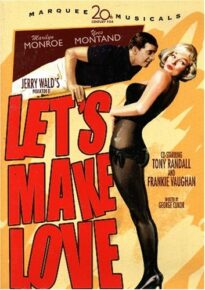 I have a somewhat embarrassed confession to make. September 8, 1960 was the release date of both Let’s Make Love and Psycho, and I went to see both of them—in that order, back to back at separate theatres—in Madison, Wisconsin. I was 17 at the time and about to start my senior year at boarding school, and I distinctly recall preferring the Marilyn Monroe-Yves Montand musical to the Alfred Hitchcock horror thriller. In some ways I still do, even after fully admitting that Psycho is more profound as well as more artistically successful. Let’s Make Love is a clumsy failure by contrast—the script is full of red herrings and dangling threads, and none of the characters can be said to develop—but Monroe’s character in this movie, neither a bimbo nor a schemer, and certainly not a psychological cripple (accounting for most of her other parts from the ’50s onwards), is in some ways the most likable and realistic role she ever played. And the movie’s thoughts about stardom and existential identity (enhanced by Montand’s own association with the Sartre circle) and what money can do to distort our perceptions of both, corrupt almost everyone, and solicit respect for power even when none is warranted, remain for me both potently deconstructive and multilayered, even after the movie winds up reneging on these conclusions in order to provide a conventional clinch at the end between Montand’s billionaire and Monroe’s off-Broadway starlet.
I have a somewhat embarrassed confession to make. September 8, 1960 was the release date of both Let’s Make Love and Psycho, and I went to see both of them—in that order, back to back at separate theatres—in Madison, Wisconsin. I was 17 at the time and about to start my senior year at boarding school, and I distinctly recall preferring the Marilyn Monroe-Yves Montand musical to the Alfred Hitchcock horror thriller. In some ways I still do, even after fully admitting that Psycho is more profound as well as more artistically successful. Let’s Make Love is a clumsy failure by contrast—the script is full of red herrings and dangling threads, and none of the characters can be said to develop—but Monroe’s character in this movie, neither a bimbo nor a schemer, and certainly not a psychological cripple (accounting for most of her other parts from the ’50s onwards), is in some ways the most likable and realistic role she ever played. And the movie’s thoughts about stardom and existential identity (enhanced by Montand’s own association with the Sartre circle) and what money can do to distort our perceptions of both, corrupt almost everyone, and solicit respect for power even when none is warranted, remain for me both potently deconstructive and multilayered, even after the movie winds up reneging on these conclusions in order to provide a conventional clinch at the end between Montand’s billionaire and Monroe’s off-Broadway starlet.
Both Psycho and Let’s Make Love are concerned with sex and money and the relation between them, although they couldn’t be farther apart in how they negotiate that relationship. Psycho has, of course, gone on to become one of the central landmarks in film history, its shower murder supplanting the Odessa Steps sequence in Eisenstein’s Potemkin as a textbook illustration of what montage can (and presumably should) do, whereas Let’s Make Love, in spite of Monroe, remains so lacking in prestige that it still hasn’t come out on Blu-ray (although the restored and letterboxed version on a Fox DVD is perfectly adequate). I should add that one important factor that all but ruined Psycho for me was having read the Robert Bloch novel it derives from beforehand, which alerted me to all the surprising plot twists. But even without this handicap, some of the songs in Let’s Make Love continue to hum in my brain, which hasn’t happened with Bernard Herrmann’s stabbing and shrieking Psycho score.
***
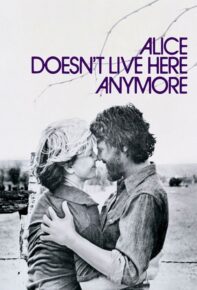 I hadn’t seen the beautifully titled Alice Doesn’t Live Here Anymore (1974) since I attended a London press screening in the mid-’70s, and was delighted to discover how wonderfully it holds up after recently watching it a second time on a Warner DVD. Of course it’s really Ellen Burstyn’s show more than Martin Scorsese’s, but we can get a pretty good idea of how much it belongs to each of them from the DVD extras.
I hadn’t seen the beautifully titled Alice Doesn’t Live Here Anymore (1974) since I attended a London press screening in the mid-’70s, and was delighted to discover how wonderfully it holds up after recently watching it a second time on a Warner DVD. Of course it’s really Ellen Burstyn’s show more than Martin Scorsese’s, but we can get a pretty good idea of how much it belongs to each of them from the DVD extras.
***
 Until recently, I perversely and paradoxically remembered Peter Yates as the Brit who directed the relatively forgettable Bullitt (1968). The recent and well-appointed Blu-rays of The Friends of Eddie Coyle (1973, Criterion) and Breaking Away (1979, Twilight Time), the first of which I’d never seen before, changed all that. Kent Jones’ essay on Eddie Coyle does a fine job of pinpointing what’s so special about this Boston crime movie, a drab cousin of John Huston’s Fat City (1972) in its evocations of dashed hopes and over-the-hill losers, including Robert Mitchum’s remarkably low-key and un-showy ensemble performance. Yates virtually begins his audio commentary by singling out this movie as one of his three personal favourites, along with Breaking Away and The Dresser (1983), and having at this point already rekindled my enthusiasm for the former film’s ode to a teenage bicycle racer in Bloomington, Indiana, I then proceeded to order a PAL DVD from MovieMars of the Ronald Harwood-scripted blunderbuss. But I’m sorry to report that The Dresser has none of the small-scale virtues of the other two films, unless one counts the quiet detailing of the period atmosphere of wartime England—which is virtually the only thing about the film that’s quiet, as The Dresser exudes the sort of boilerplate bombast that garners more Oscar nominations than intimations of anyone’s life as it is plausibly lived, even inside a Shakespearean touring company. Like Bullitt, it’s a showcase full of sound and fury, signifying little. By contrast, Breaking Away and Eddie Coyle solicit recognition, not applause.
Until recently, I perversely and paradoxically remembered Peter Yates as the Brit who directed the relatively forgettable Bullitt (1968). The recent and well-appointed Blu-rays of The Friends of Eddie Coyle (1973, Criterion) and Breaking Away (1979, Twilight Time), the first of which I’d never seen before, changed all that. Kent Jones’ essay on Eddie Coyle does a fine job of pinpointing what’s so special about this Boston crime movie, a drab cousin of John Huston’s Fat City (1972) in its evocations of dashed hopes and over-the-hill losers, including Robert Mitchum’s remarkably low-key and un-showy ensemble performance. Yates virtually begins his audio commentary by singling out this movie as one of his three personal favourites, along with Breaking Away and The Dresser (1983), and having at this point already rekindled my enthusiasm for the former film’s ode to a teenage bicycle racer in Bloomington, Indiana, I then proceeded to order a PAL DVD from MovieMars of the Ronald Harwood-scripted blunderbuss. But I’m sorry to report that The Dresser has none of the small-scale virtues of the other two films, unless one counts the quiet detailing of the period atmosphere of wartime England—which is virtually the only thing about the film that’s quiet, as The Dresser exudes the sort of boilerplate bombast that garners more Oscar nominations than intimations of anyone’s life as it is plausibly lived, even inside a Shakespearean touring company. Like Bullitt, it’s a showcase full of sound and fury, signifying little. By contrast, Breaking Away and Eddie Coyle solicit recognition, not applause.
***
As Dave Kehr, among others, has suggested, the moment one rules out his Oscar-laden Paul Muni biopics William Dieterle emerges as an unacknowledged master, especially in some of his work in the ’30s and ’40s. And I would go a little further in specifying that, within my own reckoning (which doesn’t include the German films at the beginning and at the end of his career), his principal area of expertise appears to be fantasy—at least if one uses that term elastically enough to encompass something like Jewel Robbery (1932) along with the more obvious examples, such as his collaboration with Max Reinhardt on A Midsummer Night’s Dream (1935) or later efforts like The Devil and Daniel Webster (1941) and Portrait of Jennie (1948).
This reflection was prompted mainly by a recent look at 6 Hours to Live (1932), a hokey but exceptionally weird fantasy thriller about a debonair, controversial diplomat (Warner Baxter) who gets murdered during a trade conference in Geneva, only to be brought back to life for six hours by a team of mad scientists—enough time for him to solve the mystery of who strangled him, inform the world at large that being dead isn’t so bad after all, perform a slew of Christian Good Works, and correct or complete a lot of unfinished business. I wouldn’t exactly call this particular oddity masterful, but it’s full of evocative moments that display varying amounts of mastery, and I can’t recall anything else remotely like it. Much of the acting is bug-eyed, late-silent-period exaggeration, and the strangeness of the pro-death message manages to evoke elements of both Resnais at his most mannerist (Je t’aime, je t’aime; L’amour à mort) and a seemingly Germanic form of death wish. (The six credited writers, including Jules Furthman, adapted a story by Gordon Morris and Morton Barteaux entitled “Auf Wiedersehen.”) You can order this for $15 from www.20thcenturyvintage.biz.
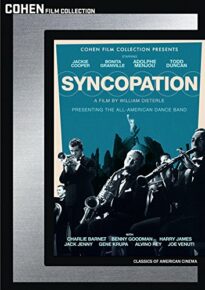 A more mixed bag is Dieterle’s independently produced Syncopation (1942), a forgotten curio released on Blu-ray in the Cohen Film Collection—an ambitious but seriously compromised project, usefully chronicled and annotated by J. Hoberman in his February 27 New York Times DVD column, that begins as an account of the African slave trade and ends with some so-so jamming by all-white jazz and swing luminaries. But the Cohen label has more than made up for the feature’s disappointments and missed opportunities by appending no less than nine lovely restorations of notable jazz shorts from 1929-39, three of which Ehsan Khoshbakht and I are screening at Il Cinema Ritrovato around the same time that this column reaches print: Black and Tan (1929, with Duke Ellington), Rhapsody in Black and Blue (1932, with Louis Armstrong), and Cab Calloway’s Hi De Ho (1933). And no less coincidentally, Twilight Time has just released the precious, virtually (or is it literally?) all-black 1943 Stormy Weather (with Lena Horne, Bill Robinson, Cab Calloway again, Katherine Durham, Fats Waller, Slam Stewart, and the Nicholas Brothers, among others) as one of its limited-edition releases. (Footnote on Slam: For the giddy exploits of Slim [Galliard] and Slam, go immediately to one of the overseas editions of the 1941 Hellzapoppin’, a goofy extravaganza that continues to be unavailable in the US due to rights clearance issues.)
A more mixed bag is Dieterle’s independently produced Syncopation (1942), a forgotten curio released on Blu-ray in the Cohen Film Collection—an ambitious but seriously compromised project, usefully chronicled and annotated by J. Hoberman in his February 27 New York Times DVD column, that begins as an account of the African slave trade and ends with some so-so jamming by all-white jazz and swing luminaries. But the Cohen label has more than made up for the feature’s disappointments and missed opportunities by appending no less than nine lovely restorations of notable jazz shorts from 1929-39, three of which Ehsan Khoshbakht and I are screening at Il Cinema Ritrovato around the same time that this column reaches print: Black and Tan (1929, with Duke Ellington), Rhapsody in Black and Blue (1932, with Louis Armstrong), and Cab Calloway’s Hi De Ho (1933). And no less coincidentally, Twilight Time has just released the precious, virtually (or is it literally?) all-black 1943 Stormy Weather (with Lena Horne, Bill Robinson, Cab Calloway again, Katherine Durham, Fats Waller, Slam Stewart, and the Nicholas Brothers, among others) as one of its limited-edition releases. (Footnote on Slam: For the giddy exploits of Slim [Galliard] and Slam, go immediately to one of the overseas editions of the 1941 Hellzapoppin’, a goofy extravaganza that continues to be unavailable in the US due to rights clearance issues.)
***
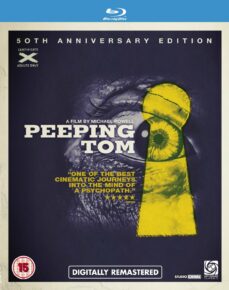 Unlike Pedro Costa, who has an unmistakable knack for finding and purchasing out-of-the-way DVDs on his global film-festival travels, I only picked up a single item in Hong Kong when I was there last spring to serve on the Young Cinema jury, in a shopping mall called Elements (where, following the Chinese understanding of what the “elements” are, “wood” assumes the place taken by “air” in Western versions; I found the disc in the “fire” section, next to the multiplex where the competition films were screening). This was a decently priced Blu-ray of Michael Powell’s Peeping Tom (1960) that can also be found on Amazon UK, but not on Chinese Amazon. No extras are on my Blu-ray, unlike the UK version (as tracked on DVD Beaver), but it’s a fine transfer.
Unlike Pedro Costa, who has an unmistakable knack for finding and purchasing out-of-the-way DVDs on his global film-festival travels, I only picked up a single item in Hong Kong when I was there last spring to serve on the Young Cinema jury, in a shopping mall called Elements (where, following the Chinese understanding of what the “elements” are, “wood” assumes the place taken by “air” in Western versions; I found the disc in the “fire” section, next to the multiplex where the competition films were screening). This was a decently priced Blu-ray of Michael Powell’s Peeping Tom (1960) that can also be found on Amazon UK, but not on Chinese Amazon. No extras are on my Blu-ray, unlike the UK version (as tracked on DVD Beaver), but it’s a fine transfer.
Only a week after I returned from Hong Kong, I flew to São Paulo to give a lecture on Orson Welles at the documentary film festival and conference there called It’s All True, where I wound up being given a few DVDs that were more noteworthy, especially Sérgio Machado’s lovely 2001 documentary Onde a terra acaba/At the Edge of the Earth (available from www.vfiles.com.br)—about Mário Peixoto (1908-1992), the enigmatic artist who made the silent masterpiece Limite in 1930 but completed no other films—and Jorge Bodanzky and Orlanda Senna’s 1974 documentary Iracema (available from www.ims.com.br), only the first of which I’ve seen so far.
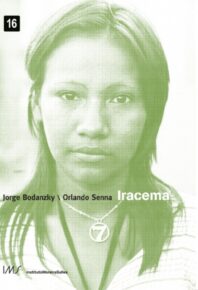 For those who haven’t seen Limite—which two separate polls of Brazilian film critics and Nelson Pereira dos Santos, among others, have named the greatest of all Brazilian films—Machado’s poetic 75-minute feature is in some ways more a thoughtful teaser than a comprehensive account of who Peixoto was and what he was up to. Unless my post-Brazilian jetlag caused me to miss something, there’s nothing about his 1931 poetry collection Mundéu, for instance (which I learned about from Wikipedia—a far better reference source, in my experience, than Internet Movie Database, because it isn’t staffed by drones), nor does one hear anything about the following revelation, also from Wikipedia (referenced from a fuller account in the excellent and very helpful bilingual website mariopeixoto.com): “Limite became over the years almost a myth—its only copy being almost lost during the 1950s, were it not to be restored thanks to the personal efforts of two 1970s critics—and the object of various legends, many of them put into circulation by Peixoto himself. One such legend referred to a bogus complimentary article about the film (‘A film from South America’), that had supposedly been written by Sergei Eisenstein and published, in English translation, in the trendy Londoner magazine Tatler. Only after Peixoto admitted, shortly before his death, that he had himself written the supposed ‘Portuguese translation’ of ‘Eisenstein’s’ article, was the general credence given to this legend in Brazil withdrawn.” But I emerged from this documentary feeling that Machado’s reticence and reluctance to theorize about Peixoto is really part of his poetic tact about the mystery of the man, which seems entirely appropriate.
For those who haven’t seen Limite—which two separate polls of Brazilian film critics and Nelson Pereira dos Santos, among others, have named the greatest of all Brazilian films—Machado’s poetic 75-minute feature is in some ways more a thoughtful teaser than a comprehensive account of who Peixoto was and what he was up to. Unless my post-Brazilian jetlag caused me to miss something, there’s nothing about his 1931 poetry collection Mundéu, for instance (which I learned about from Wikipedia—a far better reference source, in my experience, than Internet Movie Database, because it isn’t staffed by drones), nor does one hear anything about the following revelation, also from Wikipedia (referenced from a fuller account in the excellent and very helpful bilingual website mariopeixoto.com): “Limite became over the years almost a myth—its only copy being almost lost during the 1950s, were it not to be restored thanks to the personal efforts of two 1970s critics—and the object of various legends, many of them put into circulation by Peixoto himself. One such legend referred to a bogus complimentary article about the film (‘A film from South America’), that had supposedly been written by Sergei Eisenstein and published, in English translation, in the trendy Londoner magazine Tatler. Only after Peixoto admitted, shortly before his death, that he had himself written the supposed ‘Portuguese translation’ of ‘Eisenstein’s’ article, was the general credence given to this legend in Brazil withdrawn.” But I emerged from this documentary feeling that Machado’s reticence and reluctance to theorize about Peixoto is really part of his poetic tact about the mystery of the man, which seems entirely appropriate.
(Limite is currently rather difficult to come by, apart from one reasonably priced Brazilian source (http://produto.mercadolivre.com.br/MLB-637286929-dvd-filme-nacional-limite-1931-_JM) and the version broadcast on French TV, which is available on YouTube.)
***
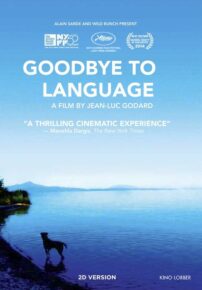 Two dissimilar but extremely rewarding Blu-rays of 3D films that also include the 2D versions: Godard’s Goodbye to Language from Kino Lorber on two separate discs, and George Sidney’s Kiss Me Kate (1953) from Warner. In the case of the Godard, having already seen Adieu au langage four times in 3D (the first two times in Paris, without the benefit of English subtitles), I was afraid that the 2D version would seem paltry, but it doesn’t at all, and I’m grateful for the lengthy interview with Godard included as an extra. He seems both tired and not in the best of health, but his clear desire to communicate frequently trumps his periodic signature opaqueness. And the accompanying essay by David Bordwell, I should add, is a model of clarity and lucidity.
Two dissimilar but extremely rewarding Blu-rays of 3D films that also include the 2D versions: Godard’s Goodbye to Language from Kino Lorber on two separate discs, and George Sidney’s Kiss Me Kate (1953) from Warner. In the case of the Godard, having already seen Adieu au langage four times in 3D (the first two times in Paris, without the benefit of English subtitles), I was afraid that the 2D version would seem paltry, but it doesn’t at all, and I’m grateful for the lengthy interview with Godard included as an extra. He seems both tired and not in the best of health, but his clear desire to communicate frequently trumps his periodic signature opaqueness. And the accompanying essay by David Bordwell, I should add, is a model of clarity and lucidity.
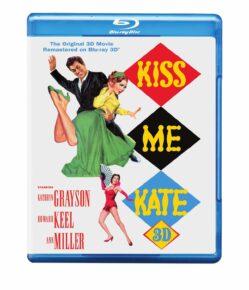 As for the spirited Kiss Me Kate, I’ve only seen it once or twice in 3D, long after its initial release—as was the case with Hitchcock’s Dial M for Murder (where the more sparing employment of 3D “effects” is counterposed by the rear projection used in some exterior shots, demonstrating how Hitchcock’s assessment of what a 3D audience might accept as “real” in 1954 looks pretty dated now). But even in 2D, this remains for me at least as pleasurable an experience as the more canonical MGM musicals such as Singin’ in the Rain and The Band Wagon. The dancing alone, especially in “From This Moment On” (a number added to the stage show, as I learned from the boilerplate but helpful extras), is often breathtaking.
As for the spirited Kiss Me Kate, I’ve only seen it once or twice in 3D, long after its initial release—as was the case with Hitchcock’s Dial M for Murder (where the more sparing employment of 3D “effects” is counterposed by the rear projection used in some exterior shots, demonstrating how Hitchcock’s assessment of what a 3D audience might accept as “real” in 1954 looks pretty dated now). But even in 2D, this remains for me at least as pleasurable an experience as the more canonical MGM musicals such as Singin’ in the Rain and The Band Wagon. The dancing alone, especially in “From This Moment On” (a number added to the stage show, as I learned from the boilerplate but helpful extras), is often breathtaking.
***
I already wrote briefly about Criterion’s glorious Blu-ray edition of Guy Maddin’s My Winnipeg (2007) in my last column, but at that point I still hadn’t seen Sinclair (2010)—one of five recent shorts by Maddin included on the disc, and one of the first three with new introductions by him—so I’d like to signal it here. The short was inspired jointly by the neglect and subsequent death of a wheelchair-bound Native American patient named Sinclair at a Winnipeg hospital, and Michael Snow’s 1971 La région centrale—an unlikely pairing but also an extremely telling one, because the film critiques not only Canadian racism but also, more obliquely, the non-humanist aesthetic of Snow’s automated camera movements. As I pointed out in a public interview with Guy in Winnipeg, this proves that he can be a political filmmaker, something that is also evident (albeit less obviously) in some of his better features, such as Archangel, Careful, The Saddest Music in the World, and, for that matter, My Winnipeg.
***
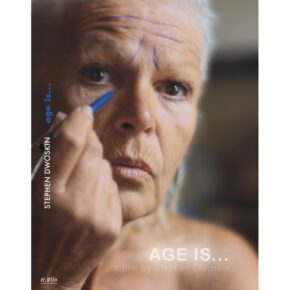 Recently released on a PAL DVD from Re:Voir Video, Age is… (2012)—the 50th and last film by Stephen Dwoskin, author of Film is…, an excellent 1975 book on American and European experimental cinema—doesn’t really qualify as an essay film in the same way as does Dwoskin’s extraordinary Pain is… (1997). Like many of Dwoskin’s late works, it was largely shot by others, as Dwoskin’s deteriorating physical condition (deriving from his childhood polio) made it difficult or impossible for him to operate the camera himself. (It should be noted though that only two other cinematographers apart from Dwoskin—Véronique Goël and Rachel Bénitah—are listed in the credits.) There is no dialogue or narration, but the editing (including the sound editing) is so exquisitely measured and calibrated that it hardly matters; the precise placements of sounds, silences (as Bresson pointed out, only the sound film could truly invent silence), and Alexander Bălănescu’s music (for string quartet, piano, and/or solo violin) are beautifully expressive throughout. And as both Raymond Bellour and Bălănescu point out—in, respectively, an essay and an interview included in the DVD’s 32-page bilingual booklet—what emerges from all the footage of the elderly people filmed (including Dwoskin himself) is neither sentimental nor depressing but, as Bellour notes of a kissing couple in the film, “victoriously and splendidly alive.” Adrian Martin wrote in his obituary of Dwoskin in the Guardian that “Dwoskin’s films never hid his disability; indeed, the human body—his own or other people’s, in all imaginable states of pleasure and pain—became his central subject. He developed, across 50 years, a cinematic style to capture, convey and explore these sensations.” Which makes Age is… a very satisfying conclusion to his oeuvre.
Recently released on a PAL DVD from Re:Voir Video, Age is… (2012)—the 50th and last film by Stephen Dwoskin, author of Film is…, an excellent 1975 book on American and European experimental cinema—doesn’t really qualify as an essay film in the same way as does Dwoskin’s extraordinary Pain is… (1997). Like many of Dwoskin’s late works, it was largely shot by others, as Dwoskin’s deteriorating physical condition (deriving from his childhood polio) made it difficult or impossible for him to operate the camera himself. (It should be noted though that only two other cinematographers apart from Dwoskin—Véronique Goël and Rachel Bénitah—are listed in the credits.) There is no dialogue or narration, but the editing (including the sound editing) is so exquisitely measured and calibrated that it hardly matters; the precise placements of sounds, silences (as Bresson pointed out, only the sound film could truly invent silence), and Alexander Bălănescu’s music (for string quartet, piano, and/or solo violin) are beautifully expressive throughout. And as both Raymond Bellour and Bălănescu point out—in, respectively, an essay and an interview included in the DVD’s 32-page bilingual booklet—what emerges from all the footage of the elderly people filmed (including Dwoskin himself) is neither sentimental nor depressing but, as Bellour notes of a kissing couple in the film, “victoriously and splendidly alive.” Adrian Martin wrote in his obituary of Dwoskin in the Guardian that “Dwoskin’s films never hid his disability; indeed, the human body—his own or other people’s, in all imaginable states of pleasure and pain—became his central subject. He developed, across 50 years, a cinematic style to capture, convey and explore these sensations.” Which makes Age is… a very satisfying conclusion to his oeuvre.
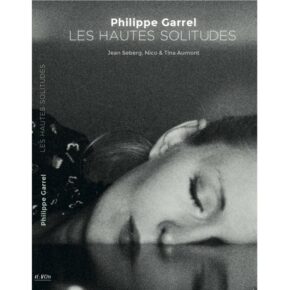 Much less life-enhancing (for me, at any rate) yet welcome and notable in other ways is Philippe Garrel’s legendary 82-minute Les hautes solitudes (1974), in black-and-white 35mm and completely silent, also from Re:Voir. According to Garrel, “The idea was to make a film out of the outtakes of a film that never existed in the first place”—specifically, a film of Jean Seberg in and around her own Paris flat, along with three of her friends (Tina Aumont, Nico, and Laurent Terzieff), consisting almost exclusively of close-ups. As Ben Sachs notes (in one of the two very thoughtful essays contained in the accompanying bilingual booklet; the other one is by Maximilian Le Cain), “This is a movie about the crippling pain of depression and the grace one can achieve by enduring it,” and it goes so far as to include footage of one of Seberg’s desperate suicide attempts, which is halted by Aumont.
Much less life-enhancing (for me, at any rate) yet welcome and notable in other ways is Philippe Garrel’s legendary 82-minute Les hautes solitudes (1974), in black-and-white 35mm and completely silent, also from Re:Voir. According to Garrel, “The idea was to make a film out of the outtakes of a film that never existed in the first place”—specifically, a film of Jean Seberg in and around her own Paris flat, along with three of her friends (Tina Aumont, Nico, and Laurent Terzieff), consisting almost exclusively of close-ups. As Ben Sachs notes (in one of the two very thoughtful essays contained in the accompanying bilingual booklet; the other one is by Maximilian Le Cain), “This is a movie about the crippling pain of depression and the grace one can achieve by enduring it,” and it goes so far as to include footage of one of Seberg’s desperate suicide attempts, which is halted by Aumont.
The only other time I’ve seen this film was at a two-day conference, “Garrel éternel,” held in Dublin in June 2001 as an immediate follow-up to the four-day “For Ever Godard” symposium held at London’s Tate Modern, and on that occasion I judged it voyeuristically intrusive; the information that Seberg permitted and apparently authorized the intrusion doesn’t entirely reverse my judgment. It’s true that we occasionally see Seberg smiling and relatively happy in the film, but the overall misery that we witness makes me regard this film as Garrel’s version of The Passion of Joan of Arc, without the trial or any historical context—unless, that is, one views Garrel’s camera as one of the inquisitors. What emerges is often shattering and sometimes beautiful, but whether or not it’s decent remains for me an open question.
***
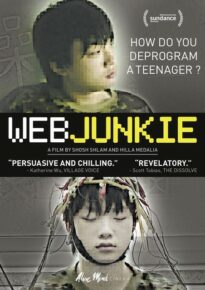 Two odd and intriguing glimpses into life in contemporary mainland China are offered by Shosh Shlam and Hilla Medalia’s 2014 documentary Web Junkie (on DVD from Kino Lorber) and Huang Weikai’s independently made 2009 Disorder (on DVD from Icarus Films). The first film deals with a Beijing treatment centre for internet addiction (especially video-game addiction), where some parents send their teenage children. The second, which I first saw a few years ago when Kevin Lee screened and spoke about it at Chicago’s Wicker Park Nightingale Cinema, is a compilation of footage shot on various mobile phones about some of the less savoury activities witnessed on the streets of a particular city, including skirmishes with the police, runaway pigs, a hit-and-run driver trying to make a financial settlement with a prone pedestrian, a scam involving bear claws, and much else. In both cases, I was fascinated by what I saw and heard and intermittently frustrated that I didn’t have more of a context in which to judge what I was seeing and hearing. Both films could have done with some instructive extras—especially Disorder, which does come with another and earlier (as well as longer) feature by Huang Weikai (Floating, 2005), which I haven’t yet seen. And Web Junkie, to be fair, does come with a podcast interview with the directors that answered some of my questions. But since the first step of any education into a given subject is an exposure of one’s ignorance, I like the fact that both of these DVDs left me hungering for more.
Two odd and intriguing glimpses into life in contemporary mainland China are offered by Shosh Shlam and Hilla Medalia’s 2014 documentary Web Junkie (on DVD from Kino Lorber) and Huang Weikai’s independently made 2009 Disorder (on DVD from Icarus Films). The first film deals with a Beijing treatment centre for internet addiction (especially video-game addiction), where some parents send their teenage children. The second, which I first saw a few years ago when Kevin Lee screened and spoke about it at Chicago’s Wicker Park Nightingale Cinema, is a compilation of footage shot on various mobile phones about some of the less savoury activities witnessed on the streets of a particular city, including skirmishes with the police, runaway pigs, a hit-and-run driver trying to make a financial settlement with a prone pedestrian, a scam involving bear claws, and much else. In both cases, I was fascinated by what I saw and heard and intermittently frustrated that I didn’t have more of a context in which to judge what I was seeing and hearing. Both films could have done with some instructive extras—especially Disorder, which does come with another and earlier (as well as longer) feature by Huang Weikai (Floating, 2005), which I haven’t yet seen. And Web Junkie, to be fair, does come with a podcast interview with the directors that answered some of my questions. But since the first step of any education into a given subject is an exposure of one’s ignorance, I like the fact that both of these DVDs left me hungering for more.
***
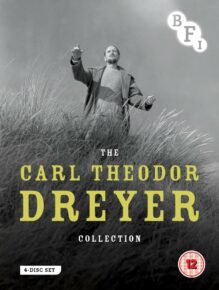 Although we already have some of Carl Dreyer’s silent films available on Blu-ray, the release of the BFI’s four-disc box set on PAL, The Carl Theodor Dreyer Collection, finally gives us Blu-rays of my three favourite Dreyers—Day of Wrath (1943), Ordet (1955), and Gertrud (1964)—as well as the 1925 Master of the House (which was already available on a Criterion Blu-ray) and a good many extras. While most of these extras are carryovers from the previous DVD versions of the films, welcome new additions include Tag Gallagher’s 20-minute 2009 video essay about Day of Wrath and, best of all, an eight-minute BBC interview with Dreyer from 1965 (roughly three years before his death), in which he manages to give, in his slightly faltering English, a succinct and eloquent overview of his entire oeuvre, regarding everything up through Vampyr as a form of experimentation and Day of Wrath, Ordet, and Gertrud as three steps towards achieving a new form of film tragedy (a project he hoped to fulfill with his planned films of Medea and the life of Jesus).
Although we already have some of Carl Dreyer’s silent films available on Blu-ray, the release of the BFI’s four-disc box set on PAL, The Carl Theodor Dreyer Collection, finally gives us Blu-rays of my three favourite Dreyers—Day of Wrath (1943), Ordet (1955), and Gertrud (1964)—as well as the 1925 Master of the House (which was already available on a Criterion Blu-ray) and a good many extras. While most of these extras are carryovers from the previous DVD versions of the films, welcome new additions include Tag Gallagher’s 20-minute 2009 video essay about Day of Wrath and, best of all, an eight-minute BBC interview with Dreyer from 1965 (roughly three years before his death), in which he manages to give, in his slightly faltering English, a succinct and eloquent overview of his entire oeuvre, regarding everything up through Vampyr as a form of experimentation and Day of Wrath, Ordet, and Gertrud as three steps towards achieving a new form of film tragedy (a project he hoped to fulfill with his planned films of Medea and the life of Jesus).


